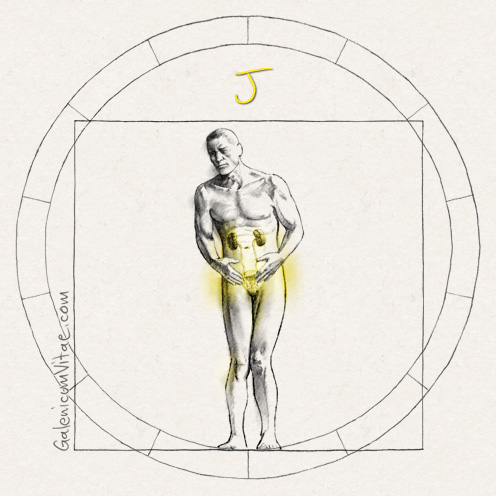Cystitis is the medical term used to refer to the inflammation of the bladder. Most often, the inflammation is caused by a bacterial infection; it is also called a urinary tract infection (UTI). A bladder infection can be painful and annoying, and can become a serious health problem when the infection spreads to the kidneys. Normally, bacteria that find their way into the bladder are removed by urination, but, if for some reason bacteria are not removed, they can grow and multiply, easily leading to inflammation of the lining of the bladder and an infection (cystitis).
Risk factors. Cystitis occurs more often in women. This is mostly for anatomical reasons because the urethra is shorter and closer to the anus than men, but also due to the predisposition at different life stages such as pregnancy or menopause.
Cystitis is an infection of the lower urinary tract, therefore symptoms usually occur in the lower urinary tract.
The most common symptoms of acute cystitis are:
- Burning during urination (dysuria).
- Constant urination, although only a small amount of urine is eliminated during urination (urinary frequency).
- Constantly feeling the need to urinate (urgency).
- Pain in the lower abdomen, which is caused by spastic contraction of the bladder during urination or intercourse.
- Blood in the urine (haematuria) or cloudy urine that can have a strong or unpleasant smell.
- Difficulty at holding in urine, with possible involuntary leakage (urinary urgency).
- Low-grade fever.
It affects people of all ages, but especially women at childbearing age and elderly men and women. It causes burning in the belly and painful urination and can be transmitted by contact with infected urine or through sexual intercourse.
There can be several causes. The most common cause of cystitis is infection by gram-negative bacteria, especially Escherichia coli. For a germ to produce cystitis it must first colonise the bladder urine (bacteriuria) and it later produces an inflammatory response in the bladder. This form of cystitis is called acute bacterial cystitis.
Other forms of cystitis are tuberculous cystitis (produced in the context of a tuberculous infection of the urinary tract), chemical cystitis (caused by direct toxic effects of some substances on bladder mucosa, such as cyclophosphamide), radiation cystitis (chronic; treatment with radiotherapy in the pelvis), glandular cystitis (epithelial metaplasia with premalignant potential) or interstitial cystitis (a chronic functional disease that causes pelvic pain, urinary urgency and frequency).
In children under five, symptoms are often vague and a more general weakness, irritability, poor appetite or nausea are present.
In older people, symptoms may be complicated by weakness, confusion, fever or falls.
For more information visit:
IC Treatments
http://www.ichelp.org/Treatments
What is interstitial cystitis?
http://familydoctor.org/familydoctor/en/diseases-conditions/interstitial-cystitis.html

 Digestive
Digestive  Blood
Blood Cardiovascular
Cardiovascular Dermatology
Dermatology Genitourinary,
Genitourinary, Hormones
Hormones Infections
Infections Oncology and
Oncology and Musculo-skeletal
Musculo-skeletal Mental health and
Mental health and Parasites
Parasites Respiratory
Respiratory Senses
Senses Various
Various




